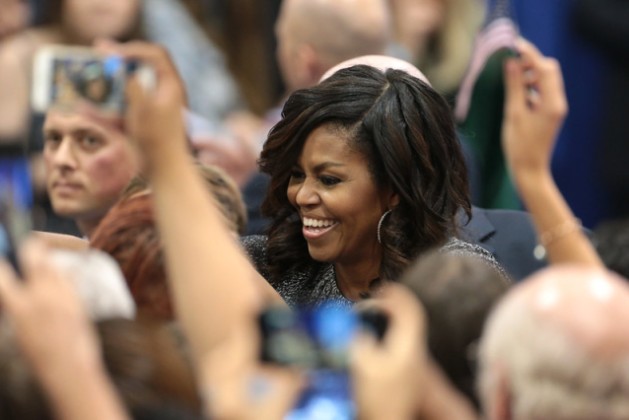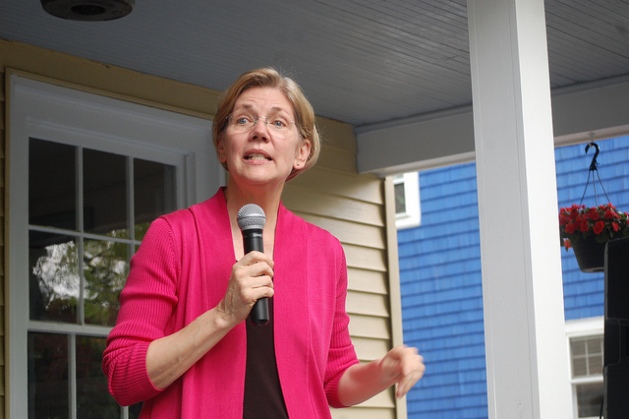
Previously published at WGBHNews.org.
There is nothing reporters and pundits love more than a mind-boggling gaffe. Rudy Giuliani achieved what you might call Gaffe Apotheosis on Sunday when he lectured Chuck Todd that “truth isn’t truth.”So let’s savor it, make memes out of it (Todd told us we should!), and throw it in the faces of President Trump’s allies whenever they repeat the falsehoods that spew forth from this administration. But let’s not pretend we don’t understand the perfectly reasonable point that Giuliani was trying to make.
As is the case with many political gaffes, the full effect of Giuliani’s howler depends on taking it out of context. The former New York mayor, now a member of Trump’s legal team, was asked by “Meet the Press” host Todd why the president won’t simply sit down and answer questions from special counsel Robert Mueller.
“I am not going to be rushed into having him testify so that he gets trapped into perjury,” Giuliani responded. “And when you tell me that, you know, he should testify because he’s going to tell the truth and he shouldn’t worry, well that’s so silly because it’s somebody’s version of the truth. Not the truth.”
Todd: “Truth is truth.”
Giuliani: “No, it isn’t. Truth isn’t truth.”
Giuliani knew instantly that he had stepped in a big, steaming pile, and he tried ineffectively to push back. The damage was done. But think about what Giuliani was saying: If Trump answers questions under oath, he’ll say things that contradict what others have said under oath. And that could set up Trump for a perjury charge. Giuliani expanded on that point a short time later, arguing that if Mueller had to choose between Trump’s sworn statements and those of former FBI director James Comey, Mueller would choose Comey, whom Giuliani identified — or, should I say, derided — as “one of his best friends.”
Now, set aside our knowledge that Trump has spoken falsely more than 4,000 times since he became president, and that Giuliani has a credibility problem of his own. Giuliani was actually making sense in saying that Mueller would have to choose between competing versions of the truth, and that he might be disinclined to believe Trump. But the inartful (OK, idiotic) way he expressed himself is all we’ll remember. This is mostly Giuliani’s fault, but it’s partly the media’s as well. Because this is what we love.
Want some more examples? Before Sunday, perhaps the most memorable gaffe by a Trump official was uttered by Kellyanne Conway, who used the phrase “alternative facts” in an interview with the very same Chuck Todd. Appearing on Jan. 22, 2017, Conway sought to explain White House press secretary Sean Spicer’s obviously false claim that Trump’s Inauguration Day crowd was the largest in history. Conway didn’t push back as hard as Giuliani did when challenged by Todd. But, later in the interview, she said Spicer was simply relying on different sources of information.
“I don’t think you can prove those numbers one way or the other,” she said. “There’s no way to really quantify crowds. We all know that. You can laugh at me all you want.” Yes, I understand that the small size of Trump’s crowd is factually beyond dispute. But Conway’s spin was reasonable, if wrong. She was not invoking Orwell.
On a more serious level, Hillary Clinton has been castigated for years over a disingenuous reading of her Benghazi testimony before a Senate hearing in 2013. “Was it because of a protest or was it because of guys out for a walk one night and decided they’d go kill some Americans?” Clinton said. “What difference — at this point, what difference does it make?” How callous! But as PolitiFact observed in analyzing Clinton’s testimony, she continued:
It is our job to figure out what happened and do everything we can to prevent it from ever happening again, Senator. Now, honestly, I will do my best to answer your questions about this, but the fact is that people were trying in real time to get to the best information…. But you know, to be clear, it is, from my perspective, less important today looking backwards as to why these militants decided they did it than to find them and bring them to justice, and then maybe we’ll figure out what was going on in the meantime.
The journalist Michael Kinsley once memorably defined a gaffe as an inadvertent statement of the truth. Sometimes, though, it’s a deliberate statement that you think won’t become public. That was the case in 2008, when Barack Obama told a group of his supporters what he thought of Clinton-leaning voters in poorer industrial cities: “They get bitter, they cling to guns or religion or antipathy to people who aren’t like them or anti-immigrant sentiment or anti-trade sentiment as a way to explain their frustrations.”
Four years later, Mitt Romney said at a fundraiser that 47 percent of the electorate would vote for Obama because they “are dependent upon government,” “believe that they are victims,” and “pay no income tax.” Both Obama and Romney spoke as they did because there were no reporters present, but their damaging remarks became public anyway.
For politicians and public figures, the solution to the gaffe challenge is obvious: Don’t step on your message with language that will seem clumsy, dumb, or insensitive if it’s taken out of context, as happened with Giuliani, Conway, and Clinton. And don’t speak your mind on the assumption that the media aren’t listening, as was the case with Obama and Romney. These things have a way of becoming public knowledge.
But there are lessons for the media, too. No one imagines that they should stop reporting gaffes, especially when they play out on live television. But even as Giuliani was making a mess of his interview, he was also saying something newsworthy: that Trump shouldn’t speak to Mueller for fear that he’ll be charged with perjury even if he speaks truthfully. You can agree, you can disagree, or you can denounce Giuliani’s statement as an outrageous attack on the rule of law. What the media shouldn’t do is overlook it in favor of cheap — if well-deserved — mockery.
Talk about this post on Facebook.

 Even more important, Trump’s presence on Twitter has not had a huge effect on its total audience. According to Statista, the number of worldwide active monthly users hovered between a low of 302 million and a high of 336 million between the first quarter of 2015 and the first quarter of 2019. (Zephoria reports that Twitter hasn’t released similar numbers since then.)
Even more important, Trump’s presence on Twitter has not had a huge effect on its total audience. According to Statista, the number of worldwide active monthly users hovered between a low of 302 million and a high of 336 million between the first quarter of 2015 and the first quarter of 2019. (Zephoria reports that Twitter hasn’t released similar numbers since then.)








